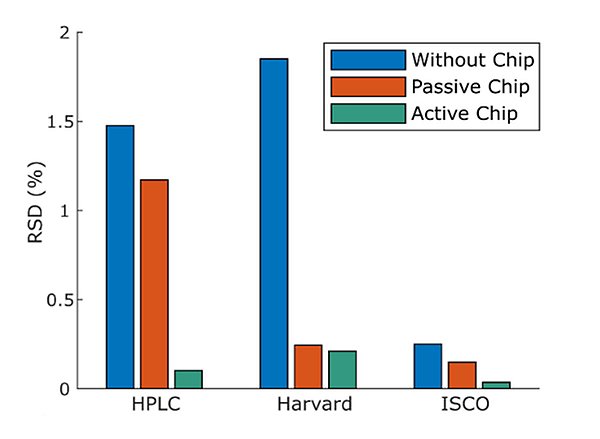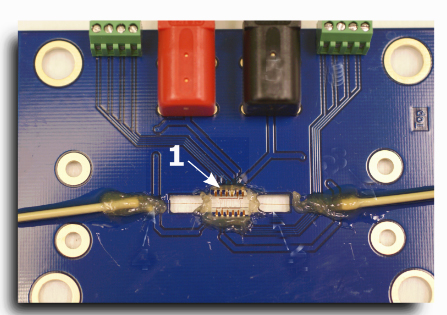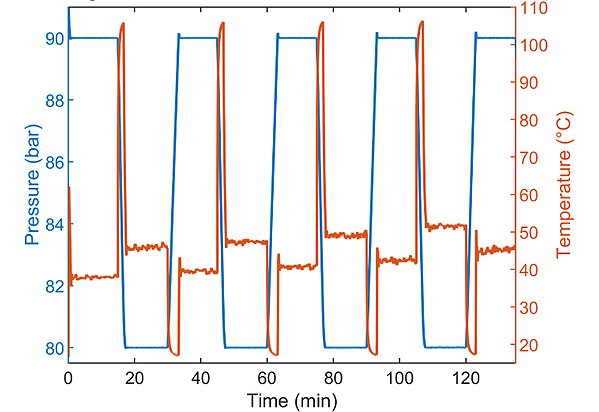Microfluidal flow and pressure control for high pressures
We intend to build technologies that enable portable analytical systems suitable for rural healthcare and environmental monitoring.
Details
- Period: 2018-01-01 – 2024-12-30
- Funder: Fam. Kamprad Foundation, CNDS
About the project
High-pressure analytical chemistry is used for medical diagnostics and detecting chemical hazards in environmental chemistry. Today, such analyses are made at central laboratories and personnel needs to taker sample, administrate them and wait for results from the central laboratory. We intend to build technology that enables portable analytical systems suitable for rural health services and environmental monitoring. This will ease decision-making, allow more samples to be tested, and reduced samples to be administrated to central laboratories.
One major limitation for this is the lack of miniaturized components for flow and pressure control and this is the focus of our project. We build on our recent technology which use the temperature dependence of viscosity to change fluid resistance. When working at high pressures, we have needed to better understand and make use of compressibility in microfluidic systems. The fluid capacitance is especially interesting as it dampen out variations and it can be used to stabilize systems or impose long time constants which demand active fluid control to alleviate.
In microfluidics, a well-known challenge is to obtain reproducible results, often constrained by unstable pressures or flow rates. Today, there are existing stabilisers made for low-pressure microfluidics or high-pressure macrofluidics, often consisting of passive membranes, which cannot stabilise long-term fluctuations. We have introduced a novel stabilisation method that is able to handle high pressures in microfluidics is presented. It is based on upstream flow capacitance and thermal control of the fluid’s viscosity through a PID controlled restrictor-chip. The stabiliser consists of a high-pressure-resistant microfluidic glass chip with integrated thin films, used for resistive heating. Thereby, the stabiliser has no moving parts. The quality of the stabilisation was evaluated with three different pumps and the stability was greatly improved for all. The highest relative precision of 0.035% and the best accuracy of 8.0 ppm. Poor accuracy of a pump was compensated for in the control algorithm, as it otherwise reduced the capacity to stabilise longer times. As the dead volume of the stabiliser was only 16 nL, it can be integrated into micro-total-analysis- or other lab-on-a-chip-systems. By this work, a new approach to improve the control of microfluidic systems has been achieved.

Ultra-precise flow stabilizer. Cartridge with flow stabilizer.

Demonstrated improved stability (standard deviation) with different pumps.
By using the temperature dependence of viscosity, we introduce a novel type of microfluidic lab-on-a-chip back pressure regulator (BPR) that can be integrated into a micro-total-analysis-system. A BPR is an important component used to gain pressure control and maintain elevated pressures in e.g. chemical extractions, synthesis, and analyses. Such applications have been limited in microfluidics, since the back pressure regularly has been attained by passive restrictors or external large-scale BPRs.
Herein, an active microfluidic BPR is presented, consisting of a glass chip with integrated thin-film heaters and thermal sensors. It has no moving parts but a fluid restrictor where the flow resistance is controlled by the change of viscosity with temperature. Performance was evaluated by regulating the upstream pressure of methanol or water using a PID controller. The developed BPR has the smallest reported dead volume of 3 nL and the thermal actuation has time constants of a few seconds. The pressure regulation were reproducible with a precision in the millibar range, limited by the pressure sensor. The time constant of the pressure changes was evaluated and its dependence of the total upstream volume and the compressibility of the liquids is introduced.

Back pressure regulator (BPR) with extremely low dead volume. Cartridge with BPR(1),

Regulating pressure by shifting the temperature in the BPR.
In the final year of the project, the technology is evaluated in chromatography and tested for small and portable analytical systems that apply high pressure.
To enable a small and portable system, a major issue is the high power needed for high-pressure pumps. An alternative is to use pressurized CO2, just like in a soda streamer. However, we need to provide a stable pressure and flow. Here, microfluidic flow and pressure control based on our technology should be a good option.
Samarbetsparter
Dept Materials Science and Engineering, Uppsala University
CNDS, Uppsala University
Project members
Contact
- För mer information kontakta professor Klas Hjort.
- Klas Hjort
